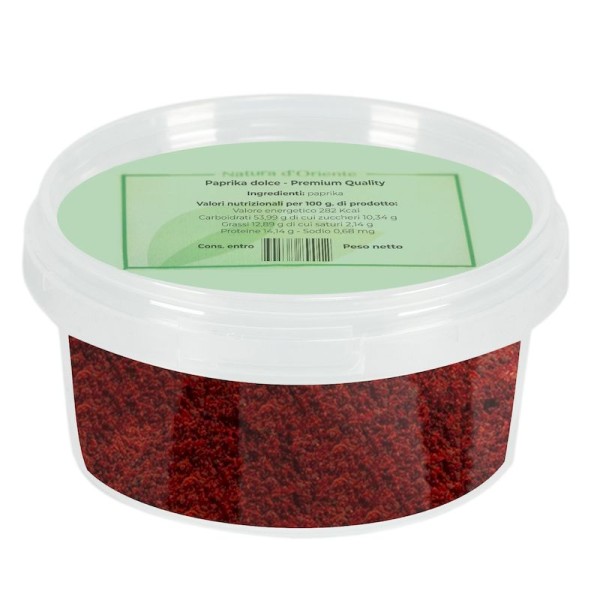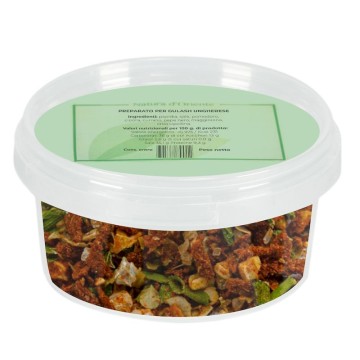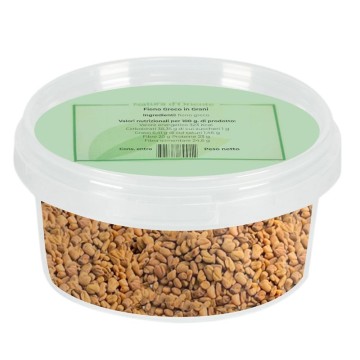Sweet paprika: properties, benefits:
Sweet paprika is rich in vitamin C, vitamin A, carotene, has anti-fermentative, analgesic, anti-rheumatic properties, stimulates blood flow and tones the body. Its vitamin C content is beneficial for both the eyes and the skin. In addition to iron, paprika contains other mineral salts that are essential for our body, such as magnesium, potassium and phosphorus.
It also contains folic acid and vitamin K. The presence of lutein and zeaxanthin is useful for protecting eye health. It is rich in vitamins useful for protecting blood vessels, among which we find vitamin E. It contains vitamin B6, considered useful for preventing hair loss. Paprika also has antibacterial properties.
Due to its capsaicin content, it helps lower blood pressure. It contains iron, which is useful for preventing anemia. It is a source of antioxidants that help prevent the signs of aging and keep our body young. It can help improve circulation. The richness of antioxidants in paprika make it a beneficial spice for keeping skin young and glowing. Including paprika in your diet could help prevent acne and varicose veins, as it is protective for both the skin and blood vessels.
Origins and historical notes:
Capsicum annum, (smoked sweet paprika) one of the five main species of the genus "Capsicum" which includes peppers and chili peppers, identifies a tropical plant native to Mexico, already known in Asia and Africa, but which spread to Europe only in the sixteenth century, after the discovery of central and southern America. But today they are known everywhere in moderate and tropical climates. It was brought to Europe by his Colombian doctor Diego Alvarez Chanca in 1494, who collected and described the first non-racial species on the second voyage of Kolumbus.
The peppers at that time were very similar to the current types of paprika. In Africa and Asia, Spanish and Portuguese traders brought between the sixteenth and seventeenth centuries. Paprika was initially known as an ornamental plant. It was in the 19th century that paprika became a reality as a commercial commodity. The Spanish finally made a specialty of this product created by grinding dried, smoked red peppers. This spice, in fact, can also be labeled with its Spanish name, Pimentón dulce.
It is obtained from the pulp of different peppers and precisely those Capsicum Annum. These fruits are dried on special precious woods and ground into a fine powder with a sweet, rich, fragrant and delicious flavor. The process to obtain it is composed of two phases, the drying of the fruits and their subsequent grinding. The drying, after dehydration, produced through a heat treatment, normally lasts about two weeks. After that, it is classified according to the types and qualities (sweet, sweet and sour or spicy) and the grinding process begins and finally the packaging. Although its main use is in the sausage industry, it is also a common element in home cooking.
Use in cooking: Penne Rigate with paprika pesto and marinated scampi ingredients: Penne Rigate 320 g Lime zest (untreated) 1 Chives 5 strands for the scampi Scampi 1 kg Lime juice 20 g Pink peppercorns 3 g Allspice 3 g Sesame oil 20 g for the paprika pesto Red peppers 400 g Toasted and unsalted cashews 50 g Peeled almonds 50 g Extra virgin olive oil 70 g Sesame oil 30 g Smoked paprika 5 g Thyme q.s. Fine salt q.s. Black pepper q.s.
PREPARATION: To prepare the penne rigate with paprika pesto and marinated scampi, start by cleaning the scampi. First remove the heads (you can use these to prepare a shellfish stock). Then, with scissors, cut the belly, in the center of the legs, and remove the carapace. With a knife, cut the back and remove the intestine.
Cut the scampi in half and place them in a baking dish. Squeeze the lime juice and pour it into the baking dish over the scampi. Also add the sesame oil, the clove black pepper (pimiento) and the pink pepper. Cover with cling film and leave to marinate in the fridge for about half a day, or, if possible, even overnight, to allow the prawns to absorb the flavours to the fullest. At this point, start preparing the pesto.
First wash under running waterrun the pepper, dry it and place it on a very hot grill; cook it for about 10 minutes to grill the skin well. Then put it in a bowl, cover it with cling film and let it cool to room temperature: the heat and steam will allow the skin to come off more easily.
Once cooled, remove the peel, the stalk and the seeds. Cut it into pieces and place it in a blender with the peeled almonds.
Also add the cashews, sesame oil and olive oil. Also add the thyme and season with salt and pepper. Turn on the blender and blend until you obtain a smooth cream, put the pepper pesto you obtained in a bowl, add the smoked paprika powder and mix well. Cook your penne rigate in plenty of boiling salted water to taste.
After the necessary time has passed, take the scampi out of the fridge and remove them with tongs so as to drain them slightly from the marinade, and avoid the peppercorns.
Cook them in a pre-heated pan for 2-3 minutes over medium heat. In the meantime, wash the chives and chop them finely with a knife. Drain the pasta, keeping the cooking water aside, and pour it into a pan in which you will pour the pesto, add the grated lime zest and sauté it, adding a ladle of cooking water to make everything creamier. Plate your penne with paprika pesto, sprinkle with chives and finish by adding the scampi.











 No reward points for this product.
No reward points for this product.















